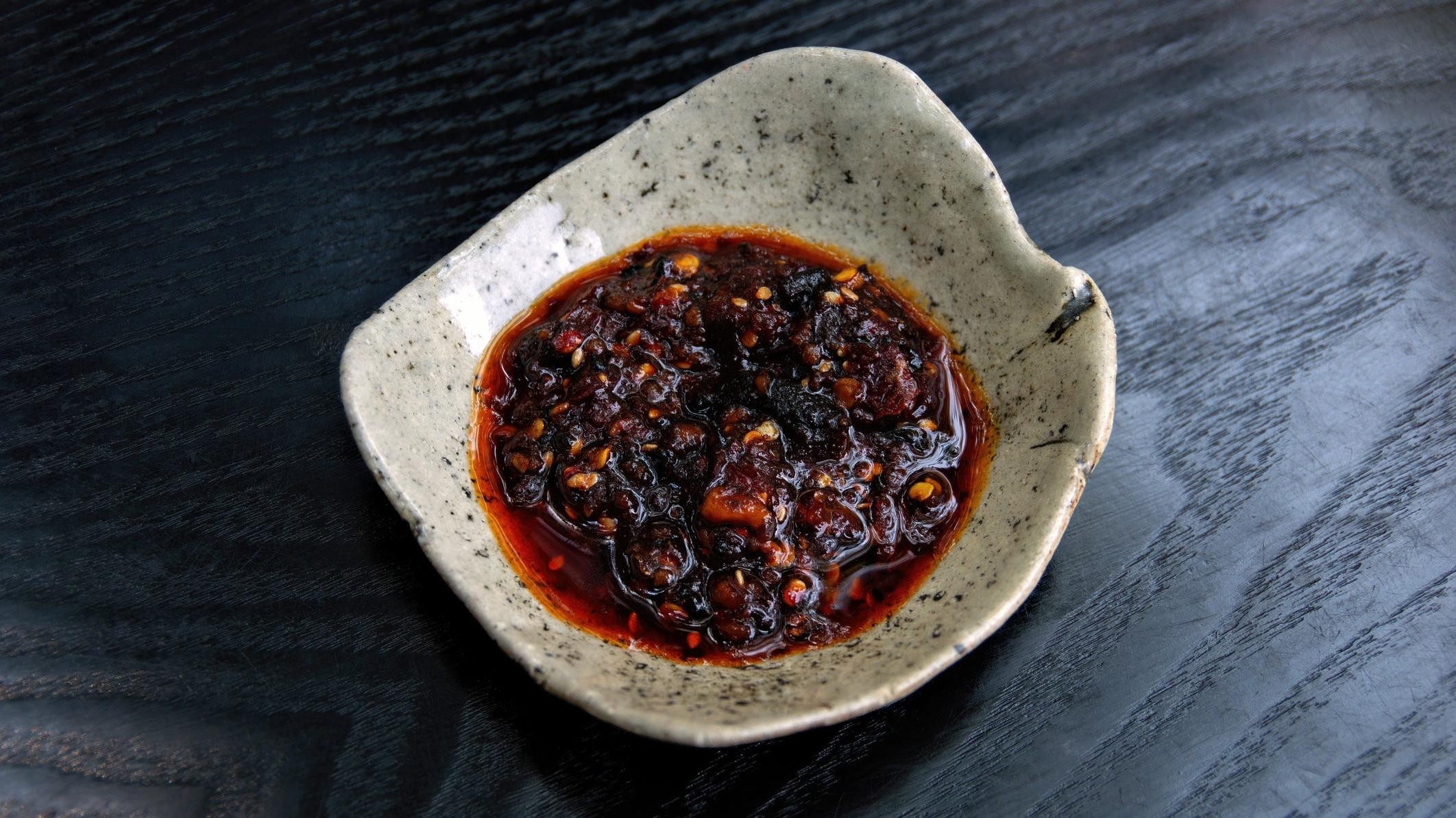Love Chili Crisp? Try Its Mexican-Inspired Cousin, Salsa Macha
Chefs are increasingly serving up this nutty, complex Mexican condiment to eager customers.
Chili crisp has gotten so familiar that people now expect it on the table when they visit Chinese restaurants. That's the jar of dark red oil that's infused with bits of garlic, peppers, onions, scallions — anything that adds a little texture.
But chefs from big cities to college town pop ups are starting to mix things up by selling macha crunch, chili crisp's Mexican inspired cousin.
I first became aware of macha crunch, also called salsa macha, through Rick Bayless, the Chicago restaurant entrepreneur whose empire is based on Mexican flavors.
In 2016, Bayless celebrated Taco Tuesday by rolling out a video showing him topping squash with salsa macha. In the state of Veracruz, and all the way up the west coast of Mexico, "everybody is eating salsa macha," Bayless said.
It is an oil-based sauce which often has toasted sesame seeds, almonds, and chiles (Bayless uses chile guallijo) and sometimes vinegar. The consistency is usually on the coarse side, because the almonds and skin from the chiles can be a challenge to process.
You often end up with a blender full of oil on top and crunchy ingredients on the bottom. Pour off a little of the oil (save it for dressings and other purposes), then stir up the remains and enjoy it.
When the pandemic closed Illinois restaurants for a second time in October 2020, Rishi Manoj Kumar, chef de cuisine at Bayless' Bar Sotano, decided he'd go into the salsa macha business.
He'd long been noodling with different types of salsa machas, so much that a bar manager once dubbed him "the macha king of Chicago," he emails.
By the second shutdown, "creativity had dwindled down to just takeout," so the time seemed ideal to go commercial.
He's selling a lineup of three versions: Morita, the most classic style; Pasilla Oaxaqueno, a smoky rendition which has pepitas (pumpkin seeds), and Verde, with cilantro and hazelnuts, which is similar to pesto consistency.
Kumar originally took orders on Instagram, but the sauces now can be found at Here Here Market.
Kumar learned about salsa macha when he was working in the kitchen at Frontera, Bayless' flagship restaurant. It reminded him of the chili condiments he'd encountered when he was growing up in Singapore.
"The chili, the complexity of nut seeds and oil gave me that initial burst of curiosity," he says.
The chiles themselves "are a whole Pandora's box of flavor profile," he says. Kumar also adds peanuts to sesame seeds in his Morita Macha.
"Cooking and blending those ingredients into the macha also releases those natural oils in those ingredients which now adds depth to the condiment," he says.
Meanwhile, in neighboring Michigan, there's at least a prince of salsa macha.
John Moors, who runs a Mexican-themed pop up in the Ann Arbor area called Lucha Puerco, began playing with salsa macha to dress up his offerings, adding sichuan peppercorns to a traditional recipe.
As an experiment, he packaged his Macha Crunch into carryout containers, and sold 20 in 10 minutes at his next pop up.
While he has an FDA license and can produce salsa macha for retail sale, "I honestly think it's more fun to do it in drops, and not have it readily available all the time," Moors emails.
Keep an eye on his website, and if he posts that he'll have it at a Lucha Puerco pop up, make your move. "When it does go on sale, people buy five or six jars at a time because they don't know when I'll make it next," he says.
Along with using it to top typical things like tacos and quesadillas, the chefs recommend experimenting with different dishes. Bayless often uses the residual oil for salad dressing.
"It's the condiment you never knew you needed, and you can add it to anything," Kumar says.
A customer told him he put the Morita version in a tub of vanilla ice cream one night. "I was like, 'you crazy,'" he said. "But I like it!"
